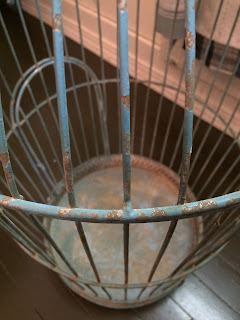Photojournalism is the formal name for this type of project.
You are in essence telling a story about someone that you know already. I want them to be accessible to you so you can photograph them over a period of time and not just in one 5 minute session. Get to know this person better. Talk with them, learn with them, do life with them over the course of this project. It is intended for you to get to know them even better and maybe learn details about them that you may not have known otherwise.
The best thing you can do to start it: ASK!
The one thing that you might want to be prepared for: feeling a little uncomfortable at first. That will go away once you start getting into the project more.
The gift of story telling is something that just wont happen on its own. Good story tellers are intentional about learning how to tell a story and practice by taking more and more photographs to get just the right ones.
Most newspaper photography fits into the catagory of story telling - one image that attempts to capture the essence of an accompanying written story. They dont have the luxery of multiple photographs to introduce, explore and finish telling a story; so almost always they have to tell the story in a single image.
Your shots need to grab the attention of the viewer. It needs to have visual and or narrative focal points that lead the viewer into the photograph.
Stories from a few photographs or even one can sometimes leave the viewer wondering about what they are looking at - not because they dont understand it but because they are intrigued by it and leave people imagining what is going on behind the image and what other future images of the scene or person might look like. Single image stories or multiple image stories are often just as or more powerful then a full onslaught of images because of what they dont include in the shot (s) as to what they do include.
What to include in your content:
Introduce the relationship - When telling a story through single images think about including more then one person in the shot. When you do this you introduce relationship into a photo which will conjure up all types of thoughts in the viewers of your shots. Having said that, sometimes carefully framing a second person OUT of your shot can add to the story you're trying to tell. Leaving evidence in the shot of a second unseen person can add questions to your viewers minds. ( For example: A shot of a person alone at a table wit two cups of coffee in front of them - or a shot of someone talking animatedly to an unseen person.) Unseen elements of a photo can add a lot.
Also think about context:
What;s going on around your subject? What's in the background? What does the other elements of the photo say about your subject and what is going on in their lives? Of course you don't want to be too obvious about setting your background up - doing so could lead to cliched shots.
One of the mistakes that many new photographers make is that they find they need to put every possible element of a story or scene into each photograph they take. This leads to photos that can be quite cluttered, that have too many focal points that confuse the viewer of them.
One way to avoid this and yet to still tell their story with your images is to take a series fo them like I am asking you to do with this project. Think of a moview sequence. Your shooting a movie with your photographs. Series of photographs used to tell a story can be anything from two or three photographs arranged together or a collage of a hundred photos arranged in an album.
A common multiple images story that many of us are familiar with are the type we take on vacation. Whether you consider this or not; such a series of photographs document the vacation and experiences you are having over the course of the time your on vacation.
Also include:
Structure: Take time to plan out your photographs if your able to. Include an introduction if possible, a plot/body and then a conclusion.
Themes: If possible include a theme. Sometime you dont have one until it emerges on its own!
When all the photos are taken its not over. Take time to edit. Edit your shots to make sure they are cropped exactly how you want them to look. Take time to make sure they are the best images for the series of photographs. Take time to make sure the coloring and filters and any blurred photos are checked and examined and finalized for the final product.
Then share them here!! Also at that point I will have you get them to me so I can print them out for your final.
I cant wait to see who you work with!!




































































































